Despite the marketing, egg freezing is not all it’s cracked up to be
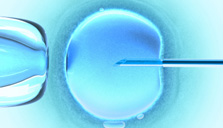 IVF has become an almost routine procedure since the birth of Louise Brown in 1978. So much so that women are increasingly delaying childbirth for various reasons, often with an assumption that IVF will be a back up in case of infertility.
IVF has become an almost routine procedure since the birth of Louise Brown in 1978. So much so that women are increasingly delaying childbirth for various reasons, often with an assumption that IVF will be a back up in case of infertility.
Of course for many couples IVF can provide a desperately wanted child. It has brought many precious new lives into being and real happiness to their parents.
But the subtext is not quite so rosy, even aside from some of the ethical issues raised (see this CMF booklet for Christian couples considering IVF).
For a start, the ‘success’ rates are not good. Even a woman who is under 35 years has just a one in three chance of having a baby using IVF. A woman in her very early 40s only has a one in ten chance of having a baby using IVF. And the chance of success drops to a mere 5% for women aged 43-44 years and 1.9% for women over 45. This is primarily because both the number and quality of a woman’s eggs reduce over time.
So freezing eggs for future use, while a woman is younger but not ready to have a child (most commonly, because of a lack of a partner), is marketed as a solution to bypass the ‘biological clock’ of motherhood or, as this Lancet article says, to ‘overcome an age-related decline in fertility’. The Lancet also proposes it as a solution to preserve fertility in patients with cancer.
Some companies now offer to freeze women’s eggs as part of their work package (to save the standard cost of £3,000 for three years storage). There have been media campaigns encouraging women to freeze their eggs to bypass the ‘biological clock’, such as a pop-up shop last year set up in central London ‘in response to a growing interest in social egg freezing’. The organisers of the pop-up shop (the Wellcome Trust and London School of Economics) claimed that: ‘Social egg freezing is a relatively new offer but one that could soon become as revolutionary to women’s life choices as the Pill’.
A Guardian article advocates that: ‘All women should have the chance to freeze their eggs or ovarian tissue in their 20s or early 30s to avoid having fertility problems later in life, experts say.’
Not surprisingly therefore, the number of eggs frozen in fertility clinics has almost tripled in recent years. And attitudes have correspondingly changed as reflected in a 2016 poll that found that 59% of young women thought that women should be encouraged to use egg freezing as a way to give them more reproductive autonomy.
Before I set out some figures, it is important to note that extracting eggs from women is a painful, invasive and risky procedure, requiring high doses of powerful drugs. It is not a procedure to be undertaken lightly.
A few weeks ago Lord Winston asked the Government what the success rates are for egg freezing. From the answers provided by the UK fertility regulator, The Human Fertilisation and Embryology Authority here, it seems that the message is getting through that eggs can be frozen for a ‘patient’s’ (I use the term ‘patient’ advisedly) future use, or eggs can be frozen and donated for other women to use.
Eight years ago 2,367 eggs were frozen for patient’s own use and just 117 were frozen for donation. By 2014, only six years later, 7,190 eggs were frozen for a ‘patient’s’ own use and 2,497 for donation.
That’s a 300% increase in women freezing eggs for themselves, but a 2,100% increase in women freezing eggs for others in six years!
The obvious question to ask next should be: what is the ‘take home baby rate’ from this (to put it crudely)?
First step, how many frozen eggs were successfully thawed, fertilized and implanted into women using IVF? In other words, how many pregnancies resulted (not ‘take home’ births)?
Taking 2014 as an example year, as the most recent year with full figures, 948 eggs were thawed for a ‘patient’s’ own use, then of these 420 were fertilized. Of these, only 155 were actually transferred to a woman. And of these only 19 pregnancies resulted.
Finally, we reach the key figure: how many live births were there from the original 948 thawed eggs? Just nine. Presumably the other ten miscarried. That’s a success rate of just 0.95%! This is where egg freezing becomes far less of a ‘success’ story, or backup option.
The figures are almost as bad for patients who use donated frozen eggs. In 2014, 852 donated eggs were thawed. 481 were fertilised. The number of pregnancies was 37 but this time there were 20 births. So, 20 births from 852 thawed donated eggs (ie. the ones that were successfully thawed – we do not have figures for the eggs that were not successfully thawed).
Why we do not hear more about these stunningly poor success rates and why this is being marketed to women as a backup (see, for example, the fertility doctor in this short film) when it so clearly is not? Why are companies being allowed to falsely raise hopes in this way? Why are they trading on the hopes and fears of childless women?
Moreover, women are not informed that some of the chemical agents used in the freezing process are known to be toxic to embryos. Nor are women told how risky egg extraction is to their health, and how little is known about it. Nor is there any systematic research or follow up of women on the receiving end of these drugs.
Which brings me to a recent Guardian report that in 2015, 60 women were admitted to hospital with severe ovarian hyperstimulation syndrome (OHSS), which is a 40% increase on the previous year. (Although, having said that, the Government and HFEA have both admitted in the past that they have no definitive data on the number of women who have been hospitalised for OHSS, and even less data for the less severe incidents of OHSS. So reporting of OHSS is mainly voluntary and the data is extremely unreliable).
I also wonder if how reliable and accurate the data collection by the HFEA is on egg freezing, as they initially provided completely incorrect – indeed impossible – figures on egg freezing to the Government and then to Parliament. The HFEA only changed their figures after they were specifically queried by Lord Alton in a further Parliamentary question. Even if just a mistake, it does not help engender trust in their data.
A final point to note here is that, when looking back over the last 24 years (1991 to 2015), the total number of successful embryo transfers (not live births) was 1,687,260. However this was at the cost of well over two million (2,315,262) destroyed embryos. In just one year, between 2014 and 2015, more than 170,000 human embryos were destroyed in the UK. A number, ironically, that is not dissimilar to the number of abortions in the same period.
The poor baby ‘take home’ rate from egg freezing is highly relevant considering that ever more women are delaying childbirth to concentrate on jobs and careers.
Are market pressures conflicting with best and safest practice? Are financial payment structures, lack of appropriate cycle monitoring and competition within the HFEA’s ‘league table’ conflicting with best and safest practice?’
In highlighting all this I am well aware that this also reflects a societal issue, and many young women will feel pressures, that having a child may jeopardise already poor employment prospects, or that their careers will be adversely affected by taking a break or doing part time work, or that they simply cannot afford children in a weak economy. At the same time we are constantly told about the costs (not benefits) of children, government tax and benefit polices consistently penalise one earner couples, and into all this the media feeds a succession of IVF success stories.
So, we have a 300% – 2,100% increase in the numbers of women freezing their eggs, yet a 0.95% pregnancy success rate! Clearly, far more realism is needed about how unsuccessful egg freezing is, along with its financial and physical costs, but Government, employers, partners, media, fertility groups, need to take some responsibility too. Please make it easier for women to have children younger, before it’s too late.

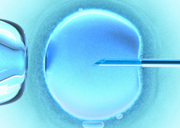
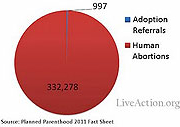
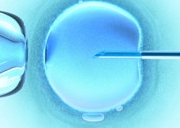

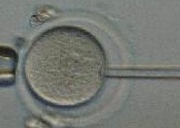

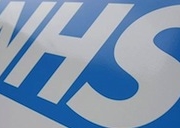
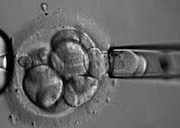



Leave a Reply
Want to join the discussion?Feel free to contribute!